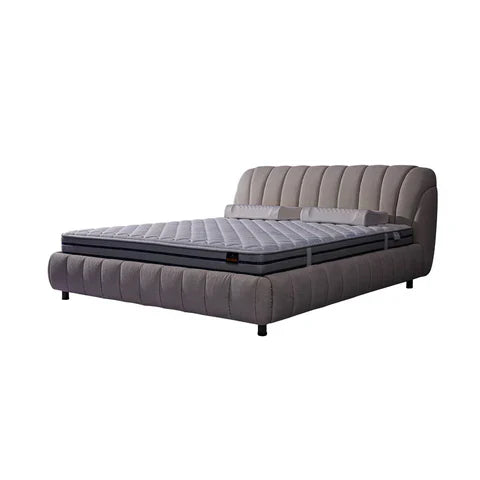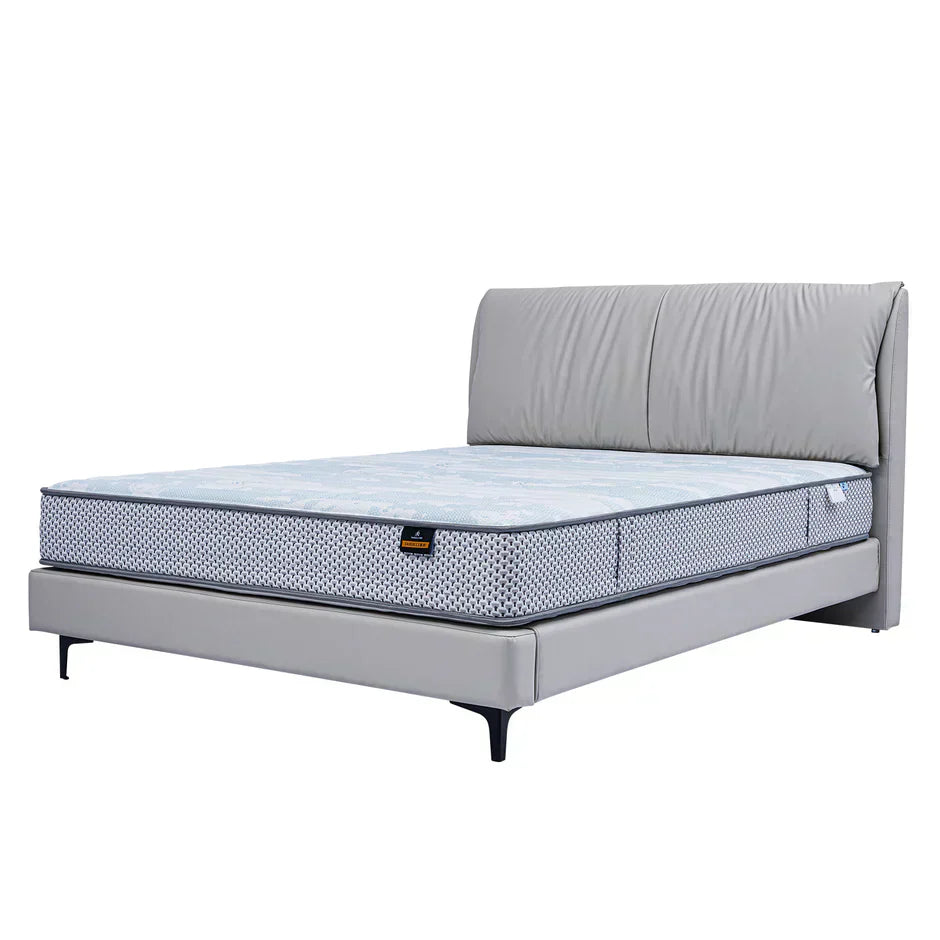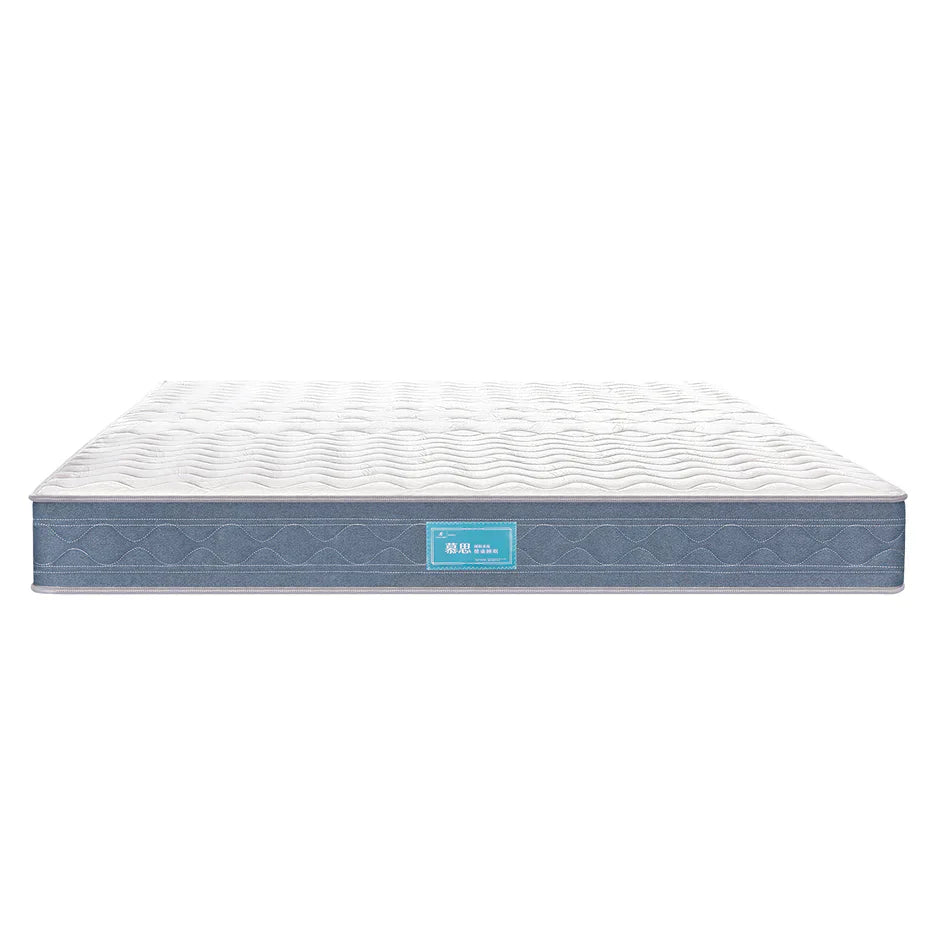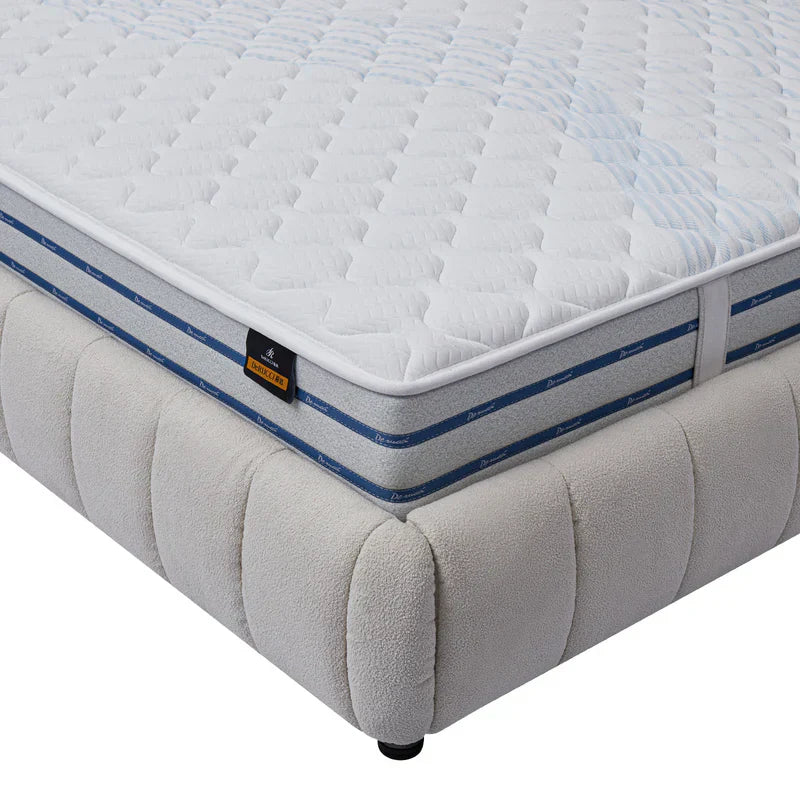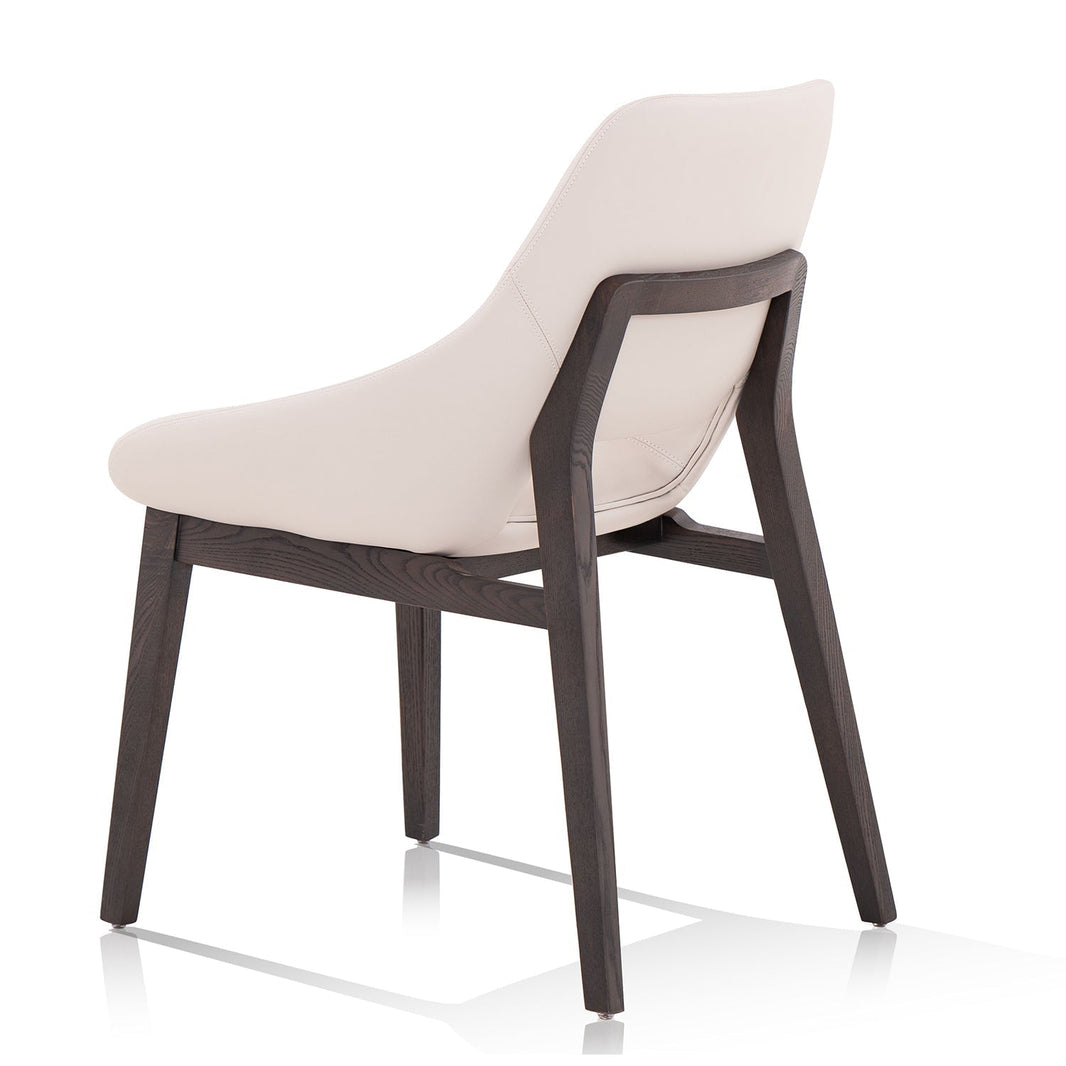Dealing with a squeaky wooden bed can drive anyone up the wall. Every little movement triggers those annoying squeaking sounds, making it hard to relax or sleep peacefully.
The good news? You can fix a squeaky bed without breaking a sweat. Most of the time, it’s just a matter of tightening a few screws or adding a little padding.
If you’re ready to stop a wooden bed from squeaking and reclaim your quiet nights, let’s get started!

Key Takeaways
- Locate the source of the squeak. Check for loose screws, cracked wood, or rubbing parts.
- Tighten the loose screw or joint that may be causing the noise. Use a screwdriver or wrench for this purpose.
- Place padding or grease between wooden parts to eliminate rubbing. Felt pads or wax can be used for this purpose to quiet the squeaks.
- Check your bed frame every few months to catch problems early; this will keep your bed functional for a long time and quiet.
- If the fix doesn't work, then replace badly broken parts or the whole frame for a permanent fix.
Why Wooden Bed Frames Squeak
Most often, a squeaking bed frame indicates something that needs attention.
1. Loose Joints
The most common cause is loose screws and bolts. With daily use, these fasteners eventually loosen, causing the parts to rub against each other and squeak. This may be more possible when:
- Your bed gets moved frequently
- It wasn't assembled properly
- The weight isn't evenly distributed
2. Part-to-Part Friction
Noises are made when pieces of wood rub against one another. This can be due to:
- Parts aren't properly aligned
- Components have shifted position
- Joints have become loose over time
3. Humidity Changes
Wood responds to moisture in the air:
- High humidity makes wood expand
- Low humidity causes wood to shrink
These changes can create gaps and misalignments that cause squeaking.
4. Age-Related Issues
Over time, bed frames naturally develop problems:
- Wood can weaken or develop small cracks
- Joints become looser
- Metal parts can develop rust or wear
These natural aging processes often result in squeaking, regardless of whether your frame is wood or metal.

What You'll Need to Fix a Squeaky Wooden Bed Frame
Basic Tools:
- Screwdriver or wrench
- Hammer
- Allen key (hex key) if your bed has hex bolts
- Pliers
- Measuring tape
Fix-it Materials:
- Wood glue for cracks
- Felt pads or fabric scraps for padding
- Bar of soap or beeswax to reduce friction
- Rubber pads for bed legs
That's really all you need! Most of these items are probably in your toolbox already.

Nice-to-Have Extras
Want to go further? These can help:
- A thick rug under the bed
- Heavy curtains to absorb sound
- Foam padding for extra noise control
No felt pads? An old t-shirt cut into squares works just as well between squeaky parts. Sometimes the simplest solutions are the best!
Money-Saving Tip: Start with what you have at home. Basic tools and some household items like soap can often fix the squeak without buying special materials. You don't need everything on this list - just grab what makes sense for your specific squeak situation. The simpler the fix, the better!
Step-by-Step Solutions to Fix a Squeaky Bed Frame
Step 1: Tighten Loose Joints
Loose joints are often the main reason your bed frame squeaks. Fixing this is straightforward if you follow these steps:
- Adjust any loose fasteners. Examining all screws and nuts, get a wrench or screwdriver While you shouldn't overtighten—you don't want to damage the wood or strip the screws—tighten them until they're snug.
- If a screw hole is loose, stuff matchsticks dipped in wood glue or wood filler into it. Let it dry then re-insert the screw for a tight fit.
- Install metal corner braces inside the frame for further stability. First drill pilot holes; next, screw-attached braces are fastened. This stage gets rid of squeaky and hardens the structure.
Step 2: Lubricate Wooden Parts
Should the squeak continue, friction between wooden components could be the source of trouble. Here, lubricating the bed frame will do miracles.
Use beeswax, soap, or wax to lower friction.
Where wood brushes against other materials, massage a bar of soap, bees wattles, or even candle wax on the joints. This quiets the squeak and lessens friction. Reapply as necessary to keep things flowing.
Steer Clear of Oil-Based Lubricants That Could Damage Wood
Avoid oil-based goods like WD-40. Though they appear like a temporary remedy, they might eventually harm the timber, and for a safe and workable fix, stick to wax or soap. A simple cure for a squeaky wood bed frame without replacing anything is lubricating wooden components.
Step 3: Add Padding to Reduce Noise
Sometimes all your bed frame requires is some cushioning to stop the squeaky.
Use Felt Pads or Fabric Between Rubbing Parts
Between rubbing-together sections of the frame, place felt cushions or fabric strips. This stops noise and softens the bed frame. Most hardware stores carry felt pads, or you might save money by using old cloth.
Place Rubber or Foam Padding Under the Legs for Stability
Should your bed tilt on an uneven floor, creaking may result. Under the legs, sandwich foam or rubber padding to absorb vibrations and stabilize the frame. This keeps scratches off your floors as well. One simple modification that will help to reduce noise is adding cushioning. It is easy to do.
Step 4: Repair or Replace Damaged Parts
Sometimes the squeak in your bed frame is due to cracked, split, or even broken pieces. Ignoring these problems could worsen things gradually.
Fill Cracks or Splits With Wood Glue or Filler
The crack in the wood may be minute, but it can lead to a big inconvenience. Here's how you can address this issue:
- Apply wood glue: Pour glue directly into the crack. Press the two pieces of wood tightly.
- Wipe off excess glue: Wipe off the excess glue with a wet rag since the glue may be oozed out.
- Clamp it down: Put the clamp on it and let it dry for a minimum of at least 24 hours for the glue to set.
- Reinforce if needed: In bigger cracks, one may want to drill pilot holes and screw them together for more reinforcement or put in some metal brackets to further add strength.
Pro Tip: If the crack is too wide, use wood filler instead of glue. Apply it with a putty knife, let it dry, and sand it smooth for a seamless finish.
Replace Broken Slats or Severely Damaged Components
Broken slats can be one of the major causes of squeaks. And actually, it is pretty easy to replace them:
- Measure the slats: Take a measuring tape and measure the length-width dimensions of the old slats.
- Choose durable materials: Use heavy-duty wood or metal slats. These kinds of materials will last longer and provide better support.
- Install the new slats: Put the replacements inside the frame and see that they fit well. Screw them in or use brackets to fasten them in place or against any kind of shifting.
Do the same if there are other damaged parts of the frame, such as legs or rails: measure, find a replacement, and install it securely.
Quick Fix: Can’t find the exact size slats? Visit your local hardware store. Many offer custom cutting services to get the perfect fit.
How to Diagnose Creaky Bed Frames and Fix Them
Tip 1: Address Uneven Floors
Uneven floors can mess with your bed frame’s stability. When the frame isn’t level, it puts extra stress on certain joints, causing squeaking. Here’s how you can fix it:
- Use furniture pads or shims under the legs to level the frame.
- Try cork or rubber adhesive floor protectors for a quick and effective solution.
- If you have drop ceiling tiles, cut and stack them under the shorter legs.
- For a long-term fix, install adjustable feet on the frame.
After you make these adjustments, gently rock the bed frame; if this feels stable and the squeaking has stopped, you've nailed it!
Tip 2: Check for Hidden Issues
Sometimes, the problem isn't that easy to identify. Noise can also be caused by hidden cracks, loose joints, or worn-out hardware. What to check for specifically:
- Cracks or splits in the wood on the frame
- Any joint or hardware for wear and tear or loosening
- Friction points where the mattress rubs against the frame
If you notice any cracks, seal them using wood glue or filler. Change majorly worn-out parts to return strength to the frame. The stopping of squeaking very often is all about finding its cause and directly working on that.
Tip 3: Evaluate the Mattress
Your mattress could be the sneaky culprit in making those noises. Either old or noisy springs can disturb your sleep and make you think that the frame is the problem. Here's what you can do:
- Rotate the mattress to distribute the pressure uniformly.
- If the springs creak, it may be the time for changing the springs.
For one that's a bit more low-key, try a memory foam mattress. It doesn't make any noise from springs, and it will work with any bed frame. A simple mattress upgrade can make all the difference in the world.
The Bottom Line
Fixing a squeaky wooden bed frame doesn't have to be a headache. You've got all the tools and tips you need to tackle the noise and reclaim your peaceful nights.
Regular maintenance isn't just about stopping squeaks. It keeps your bed looking great, extends its life, and gives you the satisfaction of preserving something valuable.
FAQ About Your Squeaky Bed Frame
Q1: Should I replace my bed frame if it keeps squeaking?
Yes. If repairs don’t work and the frame is old or severely damaged, replacing it might be the best option. To guarantee a lifetime and prevent future squeaks, search for a premium wooden bed frame.
Q2: Can I fix a squeaky bed frame without special tools?
Exactly! Most of the squeaks can be repaired with simple tools such as a hammer, wrench, or screwdriver. Take further assistance from house objects like felt pads, cloth, or soap that may reduce friction and noise.
Q3: How often should I check my bed frame for squeaks?
Check your bed frame every three to six months. Look for cracks, tighten screws, and make sure slats are secure. The more frequent the maintenance of your bed frame, the longer it will last, helping you avoid squeaks.


